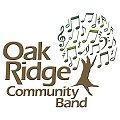-
Posts
119 -
Joined
-
Last visited
-
Days Won
12
Adrian Quince last won the day on July 10 2018
Adrian Quince had the most liked content!
About Adrian Quince

Profile Information
-
Gender
Male
-
Occupation
IT Consultant / Freelance Musician
-
Favorite Composers
Beethoven, Handel, Shostakovich, Persichetti, Sousa, Stravinsky, Hindemith
-
My Compositional Styles
Neoclassical / Neoromantic
-
Notation Software/Sequencers
Finale / Garritan
-
Instruments Played
Trumpet, Euphonium, Tuba, Horn, Trombone, Voice, Conducting
Recent Profile Visitors
2,194 profile views
Adrian Quince's Achievements
-
jawoodruff started following Adrian Quince
-
MusicianXX12 started following Adrian Quince
-
There's an it depends in here. Orchestral horn players should have no problem in bass clef. Neither should horn players reading chamber literature. Concert band is a different story. If you're writing to be published for concert band, where most sales are to the amateur market, you need to keep your horns in treble clef. Also, regarding the transposition, don't worry about the Forsythe note unless you're reading pre-1900 horn parts where the bass clef is ambiguous.
-

Baron von Munchausen (REVISED)
Adrian Quince replied to Noah Brode's topic in Orchestral and Large Ensemble
Hi Noah, Glad to. You've got a lot of good ideas and you're writing stuff that should get played. Re: the bass, in high school it's generally go with what you've got. Professional groups will, of course, get exactly what you ask for. In the community band space, having a string bass is generally 50/50 between classical bass and no bass at all. Very few players will bring an electric bass into a community band unless the score asks for it (some pop arrangements do), and most are older and learned classical bass in the first place.- 3 replies
-
- 1
-

-
- story
- symphonic band
-
(and 1 more)
Tagged with:
-

Baron von Munchausen (REVISED)
Adrian Quince replied to Noah Brode's topic in Orchestral and Large Ensemble
Hi Noah, Sorry I've not been around much lately. Between starting a new job and trying to wrap up my own music projects, it's been a couple of crazy hectic weeks. Anyway... Overall, I really like your revisions. The piece feels a lot more unified now. Since you're pushing for a May 1 entry deadline, I'm going to focus my commentary on getting the work cleaned up and ready to submit. 1. The balance of the opening section is off. The way I'm reading the score, all three trumpets would be playing the same notes for the first four bars. Likewise the three trombones. Those lines are going to be way more prominent than the others. Either split the trumpet and trombone sections into parts straight away or indicate one only for the first 4 bars. 2. I'd leave the euphonium out of the first 4 bars. The trombones will be clearer in the fanfare without the rounder tone and softer attacks of the euph. 3. I know you're kind of limited by the format of the score and what MuseScore will let you do, but ideally Trombones 1 and 2 would go with the trumpets on the fanfare line. Three trombones plus Bari Sax, Tuba, and Euphonium on that bass line is overkill. 4. In 4/4, the staccato half seems odd to me. Maybe a quarter tied to an 8th to indicate an off on 4? 5. Throughout the piece, it looks like there are only 1 or 2 trumpets. I never see the third anywhere. Third trumpet is very standard in a concert band or wind ensemble, so I think you need to go back through and look for places to do three part trumpet writing. Similar feedback on the trombones, although 3rd trombone will sometimes go off and double the tuba while 1 and 2 are doing something else. Also, similiar feedback on Clarinets. 6. Unison Alto Saxes cut through the ensemble a lot. The places where you have two altos on the top of a duet and the tenor on the bottom would likely be better served with the altos playing both duet lines and the tenor doing something else. 7. The chord at m. 24 is going to get muddy. Given the harmonies you're using the bar, the euphonium should be up an octave on the G at least. Also, this is a great spot to block out your trombones and horn in three- and four- part chords. Remember, things doubled at the unison and in octaves are always louder. 8. Your writing really shines in the sections where you're using less of the ensemble. I love the movement of the line through the different solo instruments at B. 9. When it comes to allocating solos, they should generally be placed in the first part for any section, regardless of range. The best players will be on that part. In the Horns, there is the additional aspect of managing fatigue for the player. In most bands and orchestras, the practice is to have two players on the first Horn part dividing duties. The principal will take solos and important lead sections while the assistant first will handle a lot of the rest. 10. Measure 93, great Bass Clarinet line! The player will thank you for that one. 11. I would leave the Bass Clarinet out of mm. 101-104. That gives the player a breather after the solo line and gives you a cleaner sound with just bassoons and horns. At 105, when the trombone comes in, it makes sense to add bass clarinet to thicken the texture. 12. At D, is the 6/4 grouped as three half notes or two dotted half notes? With all the syncopation in the accompaniment, it's going to be hard for the group to establish time. If it's grouped as half notes, use a 3/2. Also, for the players with the 8th note accompaniment, beam those by the half note beat so it's really easy to see. If it's grouped as dotted half notes, I'd recommend using a 3/4 so the players have more frequent barlines. 13. Also at D, the bass drum part should be: quarter note, 8th rest, 8th note, quarter rest, 8th rest, 8th note, half rest (or two quarters). This allows the player to see the beats better. 14. The high Cb in Horn 1 at m. 137 is in the extreme upper range of the instrument. If you know that you'll have a good horn player to do this, it's OK. Anything above top of the staff G is really risky to write for anything other than a professional group. 15. The key change from Cb to C feels unnecessary to me. It's a two-bar trip through the key. Probably better handled with accidentals. Likewise the three bars of E following. Also, the double bar feels misplaced. The trumpet fanfare is the end of the old section to my ear, not the beginning of the new section. Personally, this feels like a good spot to go keyless. The tonality is shifting so often I think you'll get a better result from E to F is players were just reading accidentals. 16. The Flute 2 solo at F should be a Flute 1 solo. It's technically intricate enough you want your best player on it. Also, it would be clearer to have Flute 1 play the lead in with Flute 2 holding the B below. Also, in the opening triplets, the F double sharp should be a G. 17. Rehearsal F is in C major, so it should get a key signature of C major. That will make the alterations in your exotic scale much more obvious. By the way, nice scale choice here! 18. At G, again the Flute solo should be in Flute 1. 19. At m. 194, I think F# major might actually be a better key for this. Your exotic scale is created by adding flats to a major scale, meaning Gb major starts picking up a lot of double flats. 20. The "Change to Tubular Bells" marking is incorrect. Harpists are specialists who do not double elsewhere in the percussion section. By tradition, so are timpanists. You need a single Tubular Bells staff in the score. 21. What sort of bass are you envisioning for this? With the marking "Electric Bass", you're going to get a fretted rock band bass plugged into an amp. If you want a classical bass, this should be marked String Bass, with the abbreviation "Str. Bs." (Why not just Double Bass, as in the orchestra? The tradition of calling an orchestra bass a String Bass in the concert band comes from the days (say through about 1940 or so) when the tubas were referred to as "Basses".) 22. On the last page, Horns 3 and 4 should be in unison on the upper line, not octaves. As written, Horn 4 is wasted on a note that the bass trombone is going to be belting out anyway. Also, that way you can get rid of the 8vb marking. 23. In general, I think your score would benefit from slightly smaller staves with more space between them. Right now, everything feels a little cramped. 24. I don't know how much of the staff grouping you can control in MuseScore, but I've attached an example document showing an example layout for Concert Band based on my usual practices. Regarding groupings, families of instruments (Flutes, Double Reeds, Clarinets, etc.) are grouped with winged brackets. Within families, staves with the same instrument (Oboe 1 and Oboe 2, for example) are further grouped with a hairline bracket. Curly braces are reserved for instruments where two staves are played by a single player, such as harp. Barlines run vertically through instrument families only. If you can, it's helpful to have a little extra space between instrument families. 25. Regarding staff sharing, no more than two parts can share a staff. My usual practice is to have the following share when possible: Oboes 1 and 2 Bassoons 1 and 2 Clarinets 2 and 3 - Clarinet 1 is usually the most distinct clarinet part, so it gets its own staff. Trumpets 2 and 3 - Same logic as clarinets. Horns 1 and 2, Horns 3 and 4 - This puts the horns into high-low pairs. Trombones 1 and 2 - This leaves trombone 3 or bass trombone (which should be called for if going lower than E natural below the bass clef) to be more independent or to double with the tuba. Percussion 1 - Snare Drum and Bass Drum sharing a staff. Percussion 2 - Other unpitched percussion sharing a staff. If the parts end up having highly independent figures, they should get their own staves.- 3 replies
-
- 1
-

-
- story
- symphonic band
-
(and 1 more)
Tagged with:
-
IV. Wedding Arrangements This movement is so charming! Only a few comments on this one: 1. I would seek out the advice of a good orchestral clarinetist (is there one lurking around here?) on how you're using Bb and A clarinets in the score. In isolation, I'd say that this movement would sit better on a Bb, but there's also the consideration of how much time is needed to switch and get comfortable on the new instrument. 2. The written C below the treble clef in m. 5 is below the range of the clarinet. All soprano clarinets (A-Bb-Eb) only go as low as written E below the treble clef. 3. In the Flute in m. 23, I would slur only the triplet 16ths. That will make the rhythm pop more, which seems to be what you're going for. Same thing horns m. 31. 4. See my comment above about the staccatissimos.
- 9 replies
-
- orchestral
- romantic
-
(and 1 more)
Tagged with:
-
III. Captured by the Toads The big question in this movement: C# or Db? After going the score and looking at the harmonies bar-by-bar, I think C# is right for this. Between the use of the A-natural for as a b6 and the movement to B major in the middle of the piece, the spelling would get more awkward for the concert pitch instruments in Db. Now, with that said... If you're going to put your brass in flat keys (pretty much a must with the horns here since they'd otherwise be in G# major), you need to go through and spell their notes in the flat keys. It looks like your software is retaining the sharp key spellings. Also, I'm not sure the C Trumpets really need to be in Db. The line is slow-moving enough that a good trumpet player will read it just fine. Which brings me to a general comment... unless you really want the darker, broader sound of a Bb Trumpet, I would write for C Trumpet exclusively for orchestras. In the US at least, many orchestral players will use C Trumpets in place of Bb anyway. It's not right, of course, but something to be aware of. The next big thing I see here is how you're spelling the whole tone scales. Our notation system terrible for whole tone scales, by the way, so it's not just you. At some point in any whole tone line that runs long enough, there's going to be a diminished third (C# to Eb, for example) when you switch from sharps to flats. The trick is placing it in the least worst spot. In the opening measure, the spelling of the Clarinet line is problematic. The diminished third is turned into an augmented sixth on the downward leap from A# to C. I think it would be much clearer for the Clarinet to start Ab, Bb, C so that the downward leap is a minor seventh. I would also then add courtesy sharps to the F# and G# ending the first figure so there's no ambiguity about the scale here. (I would personally change the violin to match, so the violin would start F-G-A and have a courtesy E#.) Likewise, a few bars later, the C-A#-C in the Clarinet would read far more easily as C-Bb-C. For the whole tone scales in the horns, I would use Ab-Bb-C-D-E-F# as the spelling for the scale. While Gb is a closer note in Ab Major, F#-Ab is an easily recognized diminished third. One other spelling thing, there are a few spots where you have D-D#-D-C# that I think would read better as D-Eb-D-C#. For the colossale, break your brass choir apart and use them to give weight to a lot of the chord. Right now, that unison is going to overwhelm the chord in the winds and strings and undermine the effect that you're looking for. Also, this would be a really good spot to bring the timps in on the timekeeping action to free the Cellos and Basses to add weight to the climax chord. Finally, after you do such a good job playing 2 against 3 and 3 against 2 in the first couple of movements, the straight ahead waltz meter of this movement kind of disappoints. A little more rhythmic variety would add some nice dimension to the movement and help unify it with what came before.
- 9 replies
-
- orchestral
- romantic
-
(and 1 more)
Tagged with:
-
@Noah Brode, I hope you know that you've got a lot of good stuff here already! I wouldn't be taking the time to learn the piece and give you detailed feedback otherwise. Anyway, here goes for the second movement: II. Thumbelina's Home My biggest observation about the movement is that the ends of sections generally feel a little abrupt to me. You might consider extending the final chords of some sections so they dovetail with the pickups to the next section. With a little more flow between sections this movement would come together nicely. The next biggest observation is the handling of chromatic spellings. Reading some lines as a performer, it's not clear to me what the tendencies towards resolution are for some of the chromatic alterations. For example, in m. 5, aurally that is very obviously a leading tone to A, but the spelling of Ab obscures that. G# would make that clearer. The B-flats following I would argue are A-sharps since they have a pull to B. (That said, I don't see a problem leaving the Bb for the harp since that makes the vertical sonority clearer for them.) Regarding the triplet flurries at B, I can't say I agree with slurring them by triplet. That would make sense for the strings, but in the woodwinds would break the line up more than I think you want there. Also, in these flurries, be aware that the notes below G4 on the Oboe are heavy and reedy. Synth patches don't illustrate that well. Given the range of the Bassoon from rehearsal letters B to C, it should be in tenor clef, not treble clef. At C, you might want to think about bringing the Oboe down an octave. You'll get a richer, reedier sound that may suit your con amore mark better. Great use of the Horn at m. 99! I wish I had a horn with me here to play that line. That said, a live horn player will probably produce more of a hemiola effect that you might want here. I can see leaving the preceding portion of C in 3/4, but I really do think m. 99 to rehearsal D would be better set in 3/2. The same comment applies to the Cello solo after rehearsal D. You have a balance problem at H. Putting all your brass on the top voice is going to obscure the bottom voice. You might save your lower horns (2/4) to reinforce that nice active bit in the lower voice in m. 211-214. They can continue to reinforce Cello an octave up until they go unison with the cello on the D in m. 219. At rehearsal J, it's not clear what sort of sound you're looking for out of the trumpets. If it's a big statement, I'd probably put them in octaves for the first two bars so that the first player had solid reinforcement on the high B. The fifths weren't working for me. If it's more subdued, I'd go one only. Either way, just be aware that a trumpet above the staff will project more than the synth brass would make it seem.
- 9 replies
-
- 1
-

-
- orchestral
- romantic
-
(and 1 more)
Tagged with:
-
Hey Noah, I'm probably going to take the movements one or two at time over the next few days to give them the attention I think they warrant. Here's the first one: I. Born to a Flower The big question of the movement for me is which portions are in 6/8 and 3/4. I'm hearing things differently from @Monarcheon here, in that I do sense some sections as being in 6/8. The beautiful thing about the way you've set up your materials is that you can create rhythmic tension with hemiola in either meter. Why not take advantage of it and be more explicit about which sections are primarily in 6/8 or 3/4? The harp arpeggios seem cliched to me when used as transitional material. Hollywood's drawn from that well too many times for it to seem original. That said, I do like that you staged the harp arpeggios in your opening material. It is a nice unifying element. The chord progression leading up to rehearsal A sounds awkward to me. Despite what the spellings intend, I'm hearing the two bars before A as G half diminished 7 to G augmented before landing on E major. The harmonic relationship across the barline at A feels really muddy to me as a result. That said, it's a tough fix since you use that #2 scale degree thematically elsewhere, so abandoning the F-double-sharp isn't really an option. A couple of things I've played around with to replace the augmented chord before A: a B7#5 (spelled as B-D#-Fx-A) and a Fr+6 on D# (spelled A-D#-C#-Fx). Neither is perfect, but hopefully they can help you shake loose some ideas. Also, at that same point, where does the flute solo actually start? You've got a solo mark on the barline at A, but you have a mezzo-piano before A that makes me think the F-double-sharp is actually part of the new melody here. The glock part also suggests that the solo starts before A. If so, mark Flute 1 solo before A with the dynamic you want. It's a notation convention in such cases that you can put the dynamic and "solo" marking above the staff to show it's for first flute in the score. At B, bowing every half bar would really clarify the 6/8 nature of what's happening and set off the 3/4 nature of the line more clearly. It's still pianissimo in the strings there, so I don't think you'll be sacrificing the gossamer-like quality you're looking for. Structurally, the last section (C-end) doesn't feel long enough for the gravity it brings to the movement. The music does a great job building up tension, but rushes the resolution. I really want to hear a nice, long tonic chord before the "button" chords in m. 66 and 67. Also, in the build-up of this section, why not mirror the dynamic shape you wrote for the timps elsewhere in the orchestra? The ever larger swell idea seems like a much more expressive way to build things up than the linear crescendo you have in the strings. Finally, a few of quick orchestration things near the end here: 1. From C on, the rolls you wrote would be re-attacked every beat. If that's what you want, then you're good. If you want unbroken rolls, they would be written as dotted halves tied together to get the full 2-bar duration. 2. I'd write the horn echo starting m. 61 for 1 only. Pairs of identical brass and woodwind instruments (e.g. two oboes or two horns) don't tune well when playing together. Three or more in unison work better, with a "consensus pitch" emerging from the combination of the sounds. 3. Regarding Monarcheon's comment about the voicing of the last chord, doubling the Viola G# in Horn 2 might just help it be more present.
- 9 replies
-
- orchestral
- romantic
-
(and 1 more)
Tagged with:
-
I like it overall. I think there could be more unity between sections (and smoother movement between them). Also, I would not score for Mezzo Soprano Sax in F unless you specifically know the group that will be performing this has one. There are (to my knowledge) only a few dozen that exist today. Make that part an Eb Alto Sax part if you want this piece to be generally playable.
-
Hi Noah, I really enjoyed this! It has such a wonderful late 19th century feel to it and creates a mystical world. A few general comments after two trips through the score: 1. Be very careful about E#, B#, and any double-sharp spellings. Only use them when they make absolute sense. 2. The staccatissimo mark is often played with a sense of accent as well as short. I think your quarter note staccatissimos would be better off as 8th note staccatos followed by 8th rests. 3. You don't need to restate instrumentation between movements. 4. Only the title of the work gets its own page. Movement names are stated above the first system of the movement. 5. Copyright notice should only be on the title page and first page of the work. Anywhere else and it catches the conductor's eye as a possible instruction. 6. Page numbers at the top of the page, not the bottom. Also, page numbering should be continuous.
- 9 replies
-
- 1
-

-
- orchestral
- romantic
-
(and 1 more)
Tagged with:
-
Hi Brian, I meant to say this the first time you posted this piece, but it's great for younger choirs to have music with some development in it as opposed to just verse after verse of the same stuff. Nice work!
-
True. Part of my experiment with this piece though is playing around with more descriptions of emotions to see how it shapes the player's performance. There are metaphors and experiences that we get as humans (hang time at the top of a rollercoaster, for example), that just don't fit in notation. In my head, the treatment of the tempo changes in mm. 21-31 is much more parabolic, with hang time at the top and a sense of struggle in the ascending figures. Even with all the hidden midi stuff, the playback is only a rough approximation.
-
Thanks! Cross-staff beaming is on the list once the material is settled. In Finale, it's just enough of a pain I don't like to do it until I'm prepping music for a player. Good idea about the rest beaming in m. 16, it'll definitely make that more obvious. Regarding the structure, I'm on the fence about whether to expand it or not. When I imagine it being played live with a pianist who is able to get the emotions across to the audience, it works a lot better for me. The MIDI gets across about half of what I want.
-
Hi all, Here's a little vignette for solo piano. Hope you enjoy it! (Note: for those listening closely, the playback on the feathered beams is faked using tuplets.)
-

WINTER STORY COMPETITION RESULTS
Adrian Quince replied to Monarcheon's topic in Monthly Competitions
Hi @Monarcheon and @danishali903, thank you both for the great feedback. I'm definitely going to go back and look at some things. Congratulations to all the entrants. I enjoyed each of your pieces. @Connor_Helms, I'm sure I'll grok your piece some time this century. @Noah Brode, if you choose to keep working on your piece, I'll be happy to help you get it ready for a band. It's good and it should be played.- 7 replies
-
- 2
-

-
- competition
- winter
-
(and 1 more)
Tagged with:
-

Labyrinth for prepared piano
Adrian Quince replied to Luis Hernández's topic in Piano Music, Solo Keyboard
Hey, @Luis Hernández, this is really cool! Love the colors and the groove. Makes a possibly pretentious idea like prepared piano very accessible and fun.- 8 replies
-
- contemporary
- piano
-
(and 1 more)
Tagged with:






